#toyota yaris cross dimensions
Explore tagged Tumblr posts
Text
Toyota Yaris Cross कॉम्पैक्ट एसयूवी लॉन्च, हाइब्रिड ऑप्शन के साथ आई, पहली बार मिले कई खास फीचर्स
Toyota Yaris Cross कॉम्पैक्ट एसयूवी लॉन्च, हाइब्रिड ऑप्शन के साथ आई, पहली बार मिले कई खास फीचर्स
[ad_1]
ऑटो डेस्क, अमर उजाला, नई दिल्ली Updated Mon, 31 Aug 2020 03:51 PM IST

पढ़ें अमर उजाला ई-पेपर कहीं भी, कभी भी।
*Yearly subscription for just ₹249 + Free Coupon worth ₹200
ख़बर सुनें
ख़बर सुनें
Toyota Motor Corporation (टोयोटा मोटर कॉर्पोरेशन) ने जापान में न्यू जेनरेशन Yaris Cross (यारिस क्रॉस) कॉम्पैक्ट एसयूवी लॉन्च की है। यह TNGA प्लेटफॉर्म को अपनाने वाली टोयोटा की पहली…
View On WordPress
#Auto News in Hindi#Latest Auto News Updates#toyota#toyota india#toyota motor corporation#toyota yaris cross#toyota yaris cross 2020#Toyota yaris cross 2020 price in india#toyota yaris cross dimensions#toyota yaris cross features#toyota yaris cross hybrid#toyota yaris cross hybrid 2020#toyota yaris cross hybrid india#toyota yaris cross hybrid price#toyota yaris cross hybrid price in india#toyota yaris cross hybrid price in japan#toyota yaris cross hybrid specifications#toyota yaris cross hybrid specs#toyota yaris cross price in india#toyota yaris cross suv 2020 price in india#toyota yaris cross suv price in india
0 notes
Text
2024 Toyota Yaris Price, Release Date, Redesign
2024 Toyota Yaris Price, Release Date, Redesign
2024 Toyota Yaris Price, Release Date, Redesign – The all-new 2024 Toyota Yaris is in a Toyota with Mazda DNA. According to the Mazda 2 basis, the Yaris sedan utilizes a Mazda-organised chassis, Mazda techniques, and many of the Mazda 2’s exterior and interior design ethos, the cause you may see more than a transporting likeness for the CX-3 which it provides a process. You will discover several…

View On WordPress
#2024 Toyota Yaris#2024 Toyota Yaris Colors#2024 Toyota Yaris Dimensions#2024 Toyota Yaris Engine#2024 Toyota Yaris Length#2024 Toyota Yaris Models#2024 Toyota Yaris MPG#2024 Toyota Yaris MSRP#2024 Toyota Yaris Price#2024 Toyota Yaris Redesign#2024 Toyota Yaris Release Date#2024 Toyota Yaris Review#2024 Toyota Yaris Specs#Toyota Yaris Cross 2024#Toyota Yaris Hybrid 2024
0 notes
Photo

Same wheelbase, bigger dimensions Being based on the same architecture, it is not surprising that Toyota Yaris and Yaris Cross have exactly the same wheelbase, measuring 2.56 meters (100.7 inches) between the front and rear axles. Toyota Yaris vs Yaris Cross, left imageToyota Yaris vs Yaris Cross, right image From there, the dimensions between the two start to change. The overall length of the Yaris Cross is 4.18 m (164.5 in.) compared to 3.94 m (155.1 in.) for the standard model. That equates to a difference of 24 centimeters (9.4 in.) which is seen in larger overhangs on the Yaris Cross both front and rear. Specifically, the SUV is 6 cm (2.3 in.) longer in the front and 18 cm (7in.) longer at the back. Measurements for comparison Toyota Yaris Toyota Yaris Cross Length 3,940 mm (155.1 in.) 4,180 mm (164.5 in.) Width 1,745 mm (68.7 in.) 1,765 mm (69.3 in.) Height 1,470 mm (57.8 in.) 1,560 mm (61.4 in.) Wheelbase 2,560 mm (100.7 in.) 2,560 mm (100.7 in.) Trunk 286 liters (10.1 cubic feet) 350 liters (12.3 cubic feet) - est. #toyotayaris #yaris #yariscross #yaris2020 #yaris2021 #21000 #cross #hightechnology #hightech #latest #hatchback https://www.instagram.com/p/B_b14OdliR8/?igshid=1p5vxxljkpmgs
#toyotayaris#yaris#yariscross#yaris2020#yaris2021#21000#cross#hightechnology#hightech#latest#hatchback
0 notes
Text
Adorable Toyota Yaris Cross Is a Tiny SUV With Chonky Appeal
Today’s piece of forbidden fruit comes in an enticing gold package from Toyota. The covers have been lifted off the Toyota Yaris Cross, and unfortunately, the tiny SUV—slathered here in gold paint—is not coming to the U.S. market. Here the Yaris lineup consists of two Mazda-based, Mexican-built subcompacts, the Yaris iA and hatchback, and the closest thing Toyota sells to the Yaris Cross, size-wise, is the C-HR crossover.
Similar to that C-HR, the Yaris Cross could hardly be called boring. Toyota nailed the cute-ute’s look, and the new B-segment SUV boasts a chunky stance, squared-off wheel arches, plenty of body cladding, a constrasting-color black-painted roof, and a relatively toned-down grille treatment relative to some modern Toyotas. It rides on the same platform as the global Yaris subcompact (which is different from the Mazda-based models sold here), but it boasts larger dimensions all around, measuring 9.4 inches longer, 3.5 inches taller, and 0.8 inch wider than the foreign-market Yaris hatch. Toyota says these dimensions translate to more interior space. Ground clearance has increased about 1.2 inches.
Under its hood, the Yaris Cross gets a 1.5-liter three-cylinder gas engine. A hybrid version makes 116 horsepower, which should be just enough to get the small crossover going and little more. All-wheel drive is available for buyers who want a little more traction for poor weather conditions or a more outdoorsy image.
The small crossover launches in Japan this fall and in Europe mid-2021. Versions for Japan will be built locally, and European models will be produced in France. Toyota confirmed to MotorTrend that the Yaris Cross is not destined for the U.S., and we’re not totally surprised. It may be too small to entice Americans, plus Toyota would have to figure out how to source them profitably from afar—or tool up to build the low-cost, low-margin vehicles in North America. Given how the regular Yarises sold here are built in a joint Toyota/Mazda facility in Mexico, using the Mazda 2 as a base, a retool to build this Toyota-derived model seems unlikely.
Too bad, because the Yaris sold here—Mazda or not—is a pleasant little vehicle that’s far from a cheap econobox. It offers decent performance, an inviting and upscale interior, strong fuel economy, and an attractive price tag under $20,000. A tiny SUV offering the same in a good-looking package would be money.
The post Adorable Toyota Yaris Cross Is a Tiny SUV With Chonky Appeal appeared first on MotorTrend.
https://www.motortrend.com/news/toyota-yaris-cross-looks-promising-not-coming-u-s/ visto antes em https://www.motortrend.com
0 notes
Text
WHAT HAPPENS WHEN YOU CROSSOVER EVERY SINGLE CAR DESIGN
In what can be a completely insightful exercising for transportation designers, each us of a-particular and the world over, the men at NeoMam Studios have superimposed as many as 25 photos of cars within distinct, separate classes to create an image of “the common vehicle”. This amalgamation of fronts and rears is interesting as it sees no logo, it sees no charge, and it sees no cultural or finances constraints. All it's far, is a visual mash-up of multiple vehicles across multiple brands to create something homogeneous. The “average vehicle” collection does two exciting things. It A. Shows us what’s commonplace between automobiles of categories, and B. Shows us how a few manufacturers have also tried to be subtly exceptional. There’s a wonderful similarity in, for example, the taillight layout of a Pickup as opposed to a Sedan, or the grille on a Convertible versus the grille on a Crossover. It’s crucial for transportation designers to understand these similarities and variations in car designs, so that it’s a lot easier to interrupt the mould of layout and create some thing really new and daringly exclusive. Let’s check how those average cars look, and the way designers of the destiny can break this pattern of predictability.


The Average Pickup Pickups are the fine-selling motors in USA and are the strong backbone of Ford and GM’s commercial enterprise. Considering that essentially the whole international pickup market is US-targeted, it’s no surprise that size is the whole lot on the subject of the common front. The glossy traces of Japanese and European models, just like the Isuzu D-Max or Mercedes X-Class are toughened out with the more rugged, boxed look of the likes of the GMC Sierra and Chevy Silverado. The common rear of a pickup shows pretty some competing factors seeking to muscle thru. A complete rear-mild pillar on each facets wins out over more minimalist processes, like at the F-a hundred and fifty. The common pickup may also journey plenty better than might be predicted, sticking to its original operating automobile roots as opposed to happening the road of many modern variations which often appear more cause on looking like performance cars than carrying a load of stakes.

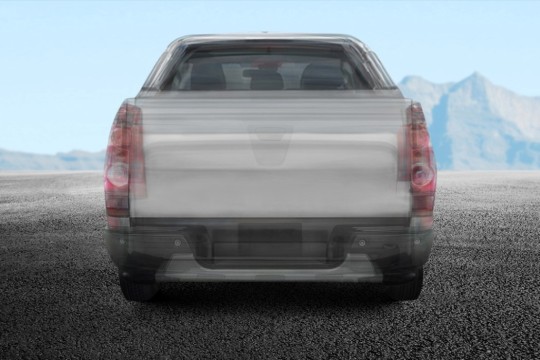
The Average UTE Where would we be without the liked UTE? The rest of the world considers them a piece of an anomaly but here at domestic they reign splendid, so much so that pretty much every producer selling in Australia gives a UTE model. With UTEs’ fronts ranging from compacts or saloons, just like the Jumbuck, to commercials just like the VW Caddy, all the manner to full on American-fashion pickups inside the mold of the HiLux, the common front is quite a combination of patterns. What wins out is the shape of lower riding saloon, however with sterner lines and a flattened bonnet giving its appearance a hint of American muscle. Though UTEs are all about birthday party at the front and business at the again, the average rear is tremendously heavy-duty, looking exactly like what a saloon/pickup cross ought to. There are recommendations of the facet bars and tarp and Tonneau cover helps that set UTEs aside from their American cousins however through the looks of things the average UTE might have carrying capacity to healthy any of them.

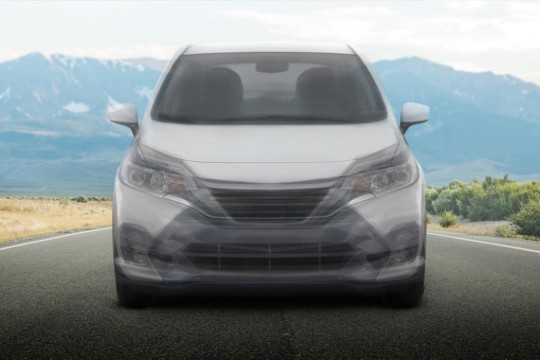
The Average Hatchback Though everyone may have their favorites for extraordinary motives, hatchbacks usually follow a formulaic pattern, which became why it became wonderful whilst some strong capabilities shone thru in spite of being averaged out. Its height to width ratio, as an instance, makes it lots taller than one might assume, which would recommend that producers had been quietly top notch-sizing hatchback fashions to meet current tastes while still striving for them to match into “small” automobile categories. This is also borne out within the bonnet length, that's in step with a smaller engine housing, however appears to be extraordinarily tiny as compared to the rest of the car’s dimensions. The common rear is also an eye fixed-opener for hatchback aficionados. Gone is the sporty fastback fashion of the mid-00s and in is a far greater reserved, Yaris-style instantly rear. Though that doesn’t mean that the sporty nature of hatchbacks has been absolutely eroded, the averaging out also gives you a twin exhaust machine to maintain the horsepower ticking over.
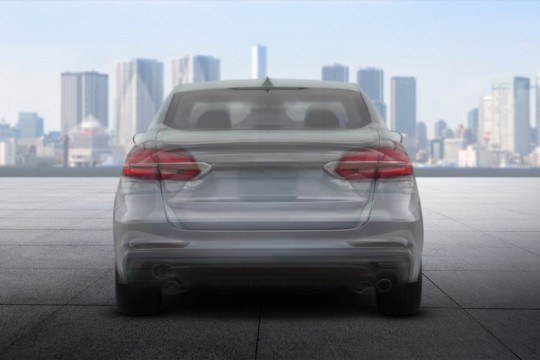
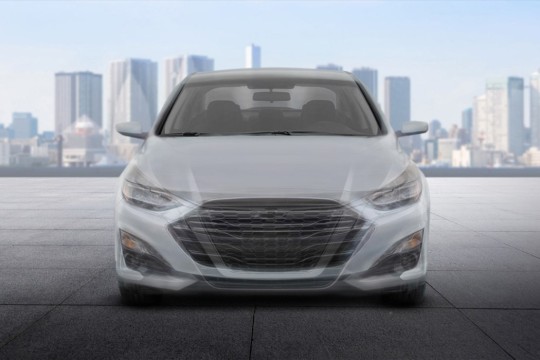
The Average Sedan The common sedan definitely seems to look something but average, displaying off a few slick lines and boasting a meaty radiator grille. The wraparound headlights are definitely on-factor and the bonnet suggests off a sweeping curve across the sides which follows the contemporary Japanese design trend from, amongst others, the new Subaru Legacy and Toyota Camry. So, even though the averaging methodology is completely goal, right here it’s clearly controlled to create some thing which could in shape proper in at any of the main shows. The rear of our common sedan takes a barely much less formidable and adventurous course. The boot and rear shoulders would extra befit a boxer than a ballet dancer however who’s to say that strong and uncompromising isn’t exactly what the common sedan driver is looking for. The rear intakes and dual exhausts upload a dash of aptitude however, common, it’s a solid, dependable look that wins out.
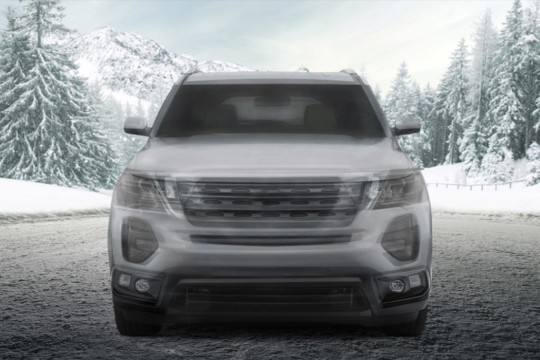

The Average SUV Sports utility cars or SUVs are a heavy-obligation lot which don’t genuinely recognize whether they need to be off-roaders or town-tractors. Due to this vehicular dysmorphia and the special layout directions taken by means of the numerous marques, we observed that the common SUV got here out with some captivating features. The front is stern, with an enforcing and barely sticking out nose and the type of grille that wouldn’t look out of region on a semi-truck. The average rear has very a great deal the advent of one of the original archetypes of the class, the Chevy Suburban. This elongated and box-like rear become initially to provide greater room on your camping equipment, however from the appearance of the common SUV we’ve created, they have got now end up the size of a small house.
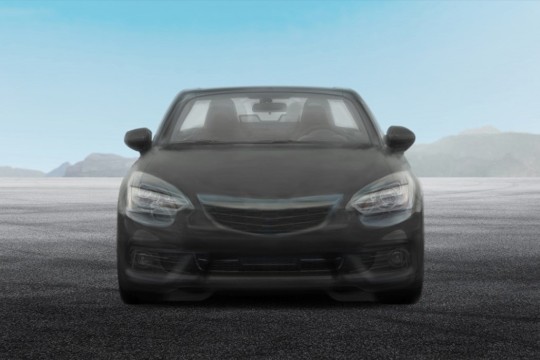
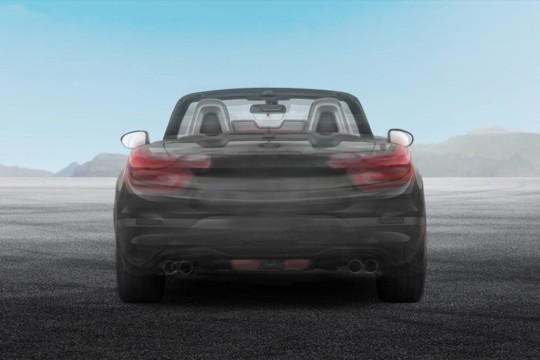
The Average Convertible As a fave of design groups who get to set free with traces, curves and features, each convertible is particular and so an interesting project for the averaging process. Drawing from Corvettes, Porsches, S-Classes and many more, the end result is that most of the kinks and curves are ironed out, although the auto still holds onto its low-profile person and the extra lower the front air intakes to preserve the probably souped-up powertrain chilled. The average rear but sincerely takes on some of the fine sporty features from the convertible magnificence. A quad exhaust system need to keep air flowing properly, at the same time as the drag-decreasing aerodynamic curves wouldn’t preserve the car again. The average convertible might obviously also have the hood down, what’s the factor in having a convertible otherwise.
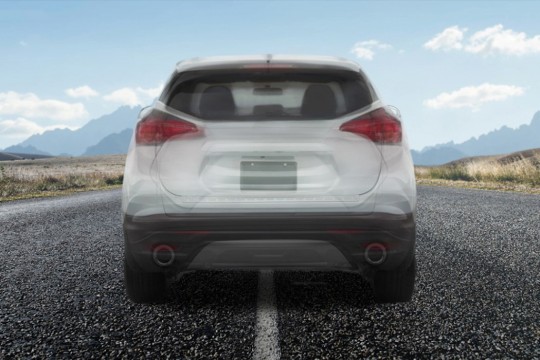
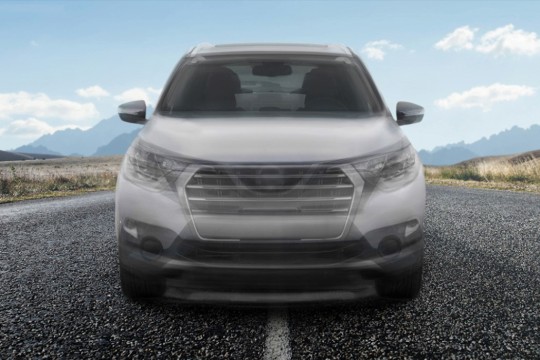
The Average Crossover Crossovers are already a significant mix of ideas, in that they generally proportion a design platform with smaller cars but get amped as much as be like milder variations of SUVs, so creating a median model acceptable it perfectly. This can be visible within the the front, wherein the narrowing curves across the headlights lead to a more tapered grille than the more in-your-face battering ram method of an SUV. The windscreen and upper element also are more petite than stated, aiming for substance in preference to declaration. The rear of the average crossover is also loads extra understated than the SUV however contains loads greater heft than the common sedan or hatchback, https://www.motortrend.com/concept-cars/even though it has a further low profile. It shows first-rate traces under the brake lighting and a graceful rear window design. Go ahead! Bookmark this newsletter for future reference because I know you designers out there can use this for future design inspiration. concept cars 2018, old concept cars, concept cars 2020, concept cars 2019, concept cars for sale, concept cars that made it to production, concept cars drawings, lamborghini concept cars Read the full article
#conceptcars2018#conceptcars2019#conceptcars2020#conceptcarsdrawings#conceptcarsforsale#conceptcarsthatmadeittoproduction#lamborghiniconceptcars#oldconceptcars
0 notes
Text
Toyota-Yaris-Cross: Toyota reveals Yaris Cross, global launch in mid-2021
Toyota-Yaris-Cross: Toyota reveals Yaris Cross, global launch in mid-2021
NEW DELHI: Toyota has recently announced that its new compact SUV, Yaris Cross, originally planned to be revealed at the 2020 Geneva Motor Show, made its world debut.
Yaris Cross will be launched in Japan in Autumn this year, and in Europe mid-2021, Toyota informed.
By adopting the all-new hybrid system and the TNGA platform (GA-B) for compact cars, the “Yaris Cross” offers a higher dimension…
View On WordPress
0 notes
Text
New Toyota Yaris Cross SUV Vs GR Vs Hatchback
The newly-launched Yaris Cross shares its platform with the regular Yaris hatchback, while Toyota has extensively worked on its design to make it a true SUV
Toyota has revealed a new compact SUV based on the Yaris hatchback’s GA-B platform, called the Yaris Cross. The Japanese manufacturer has revealed the specifications of the car, which is set to become the smallest SUV to be produced by Toyota, when it launches in the European markets next year.
Apart from the Yaris Cross, Toyota also offers a performance-oriented version of the hatch called ‘GR Yaris’. We compare the specifications of the three Yaris’, starting with the dimensions first –
Dimensions Yaris Cross GR Yaris Yaris hatchback Length 4,180 mm 3,995 mm 3,940 mm Width 1,765 mm 1,806 mm 1,745 mm Height 1,560 mm 1,461 mm 1,470 mm Wheelbase 2,560 mm 2,558 mm 2,560 mm
In terms of size the Yaris Cross is the longest and the tallest out of the three, with a length of 4,180 mm, and a height of 1,470 mm. On the other hand, the GR Yaris is the widest, with a width of 1,806 mm. The Yaris Cross and the Yaris hatchback have a 2,560 mm long wheelbase, whereas the GR Yaris’ wheelbase measures 2,558 mm.
However, the biggest difference is the Yaris Cross’ design, which gives up the curvy lines of the Yaris hatch and GR Yaris for a more boxy-design, which Toyota claims gives a sense of “solidity and practicality”. The squared-off wheel arches with plastic cladding and the massive 18-inch alloy wheels are some styling elements that set the Yaris Cross apart from the other two.
The Yaris Cross comes with a 1.5-litre three-cylinder petrol engine with hybrid technology, which is the same powertrain that was debuted with the 2020 Yaris hatch. The maximum power output of this engine is rated at 116 hp. Toyota will offer the Yaris Cross with a front-wheel drive variant, as well as an all-wheel drive trim.
In comparison, the GR Yaris gets a 1.6-litre turbocharged three-cylinder petrol engine that makes 261 hp of maximum power, along with 360 Nm of peak torque. The power is sent to all four wheels with the help of a 6-speed manual gearbox. The said powertrain is also the world’s most powerful OEM three-cylinder engine.
Source link
Tags: Cross, GR, Hatchback, SUV, toyota, Yaris
from WordPress https://ift.tt/2Y9kFHu via IFTTT
0 notes
Text
2017 Mazda CX-5 vs. 2018 Lexus NX 300: Crossing Over
With mainstream automakers offering luxury-laden trims while prestige car brands attempt to democratize luxury, we organized four comparison tests to see who does posh better for a capped price of $40,000.
The genesis of Motor Trend’s $40,000 challenge lies with the 2017 Mazda CX-5. We were impressed with the compact crossover from the moment we laid eyes on it, and when the fully refined model turned up at our SUV of the Year competition last August, multiple editors (myself included) remarked on its potential to challenge luxury models rather than its mainstream competitors.
Now we assess that potential.
The defender of the compact luxury crossover genre in this competition is the 2018 Lexus NX 300, another vehicle that pleasantly surprised us during its turn at SUV of the Year four years ago—also earning a place among the finalists.
Just shy of $37,000 to start and $40,463 as tested, our NX lands just above the average new vehicle transaction price. Meanwhile, our CX-5 in top Grand Touring trim comes in at just under $32,000 before options and $33,810 as tested. That gave the Mazda the lowest price in our field of eight and also provided the widest price gap between two competitors in our tests. Granted, you could option the Mazda up to the Lexus’ price point, but more on that later.
Dimensionally, the vehicles are much closer; the Lexus is slightly larger on the outside, but the Mazda rides on a longer wheelbase and offers more rear-seat and cargo space.
Much of what makes luxury appeal to your senses is based on first impressions, and both of these vehicles make strong ones. Approaching the Mazda, you can’t help but be struck by its premium-grade looks. The exterior design is clean and sophisticated, an evening gown compared to the Lexus’ club dress. The Lexus’ many chisels and cuts are extroverted and unmistakable. We think it’s the best application of the brand’s design language on an SUV, but we wouldn’t call it pretty.
Getting behind the wheel has a similar effect. The Mazda’s interior is simple and suave with a dashing two-tone color scheme. Clearly, Mazda spent real money in here: real metal trim; soft, supple leather; rich soft-touch plastics; contrast stitching; and passable fake-wood trim.
The base-model Lexus, meanwhile, plays a clever visual trick by strategically applying the expensive materials in places that draw your eye away from the decontented stuff. Imitation leather, which is good enough to fool you into thinking it’s the real thing, adorns the seats, steering wheel, and arm rests, and it’s set off by contrast stitching. Even the silver-hued plastic trim employs a satin finish that looks expensive. All of this neatly distracts from the center stack’s waterfall of plastic, not to mention the lower door panels that seem better suited to a Toyota Yaris. But how often do you look down there?
Functionally, the Lexus suffers setbacks, as well. The layout of the controls on the center stack makes no sense, and half the functions are controlled by the detestable touchpad-operated infotainment system—which remains distracting even to someone who’s been using it for years. The seating position is very high, which many drivers appreciate, but the steering wheel is so far away even at full extension that you have to choke up dash and pedals to reach it comfortably. The seat itself, at least, is quite comfortable.
We find the Mazda’s layout much more agreeable but still not perfect. The control layout is more traditional and ergonomic, save the rotary controller for the infotainment system, which is so far rearward on the center console that it requires an awkward, gnarled-wrist reach. The screen itself is touch-sensitive, a nice alternative to the knob, but it’s a long reach, and the screen is small by today’s standards. The full-color head-up display, by contrast, is a premium touch. The seat, though, is harder and flatter than we’d like.
Firing the engine and heading out for a drive, the first thing that strikes you is how quiet the Mazda is. Isolation from the outside world is a luxury hallmark, and Mazda has made it a priority. Indeed, applying a professional-grade sound meter to both vehicles returned surprising results: Cruising at 65 mph, the average ambient noise in each vehicle’s cabin is identical. When’s the last time you got in a mainstream vehicle that was as quiet as a luxury car? The Lexus does have a slight advantage, though, as it is quieter under full-throttle acceleration, , but you’ll do a lot less of that than cruising on the freeway.
As you’re driving, you’ll notice the two crossovers have distinct driving personalities. In our experience, the modern luxury shopper equates a degree of sportiness with luxury, and the Mazda has many more degrees than the Lexus. There’s a lightness and nimbleness to the way the Mazda drives, responding immediately and smoothly to your inputs. It can induce smiles even in gentle bends. The engine is generally well-matched to the vehicle, though it could use a little more torque on the bottom end, and the transmission shifts as smoothly and smartly as that of the Lexus. The trade-off is a firmer ride, but it’s a worthwhile one.
The Lexus, by contrast, feels heavy in everything it does. The engine surges when you step on the gas, as if mustering the strength to push the vehicle forward. You need to push the brake pedal harder than expected to slow as quickly as you’d like. It leans more in corners than that sporty look promises and goes over bumps like it’s fully loaded down even when empty. Still, the engine is smooth and responsive in a way that will make you forget it’s turbocharged, and the transmission is spot-on. The ride is softer, as befits the handling. In other words, it befits those who seek a more classic luxury experience.
But your senses can deceive, and here the test numbers don’t jibe with the driving experience. At the test track, the slower-feeling Lexus is actually substantially, surprisingly quicker in a straight line and needs only slightly longer to stop despite being the heavier vehicle. Its straight-line advantage also helps it post a slightly quicker figure-eight result than the Mazda, though the higher lateral g’s recorded in the Mazda speak to its handling prowess. If your roads are straight, you’ll be quicker in the Lexus, but if they’re curved or if you just enjoy driving, you’ll want the Mazda.
That’s you, then, but what of your passengers? Taller riders will appreciate the Mazda’s superior headroom front and especially rear, where the seat is lower. They give up a bit of legroom up front to the Lexus but gain substantially more in the rear. The actual rear seat of the Lexus is more comfortable once you climb up onto it—making sure to watch your head on the way in. Both vehicles’ rear seats recline, but only the Mazda’s are heated.
Speaking of features, it’s generally a given the more you spend over the base price, the more you’ll get. Surprisingly, though, the entry-trim Lexus is fairly well-equipped for its price. Our tester has heated and cooled front seats, active cruise control, a suite of crash-avoidance technology, a moonroof, parking sensors, blind-spot monitors, and a power tailgate—and still came in just over our $40,000 price cap as tested .
To that impressive features list, though, the Mazda adds navigation (albeit like a Garmin from 10 years ago), heated rear seats, a head-up display, and a significantly better-sounding stereo. Neither vehicle came equipped with Apple CarPlay or Android Auto. Both will offer CarPlay soon, but only Mazda has committed to offering Android Auto.
Sometimes the most important feature of all, however, is the ability to take all your stuff with you. Here, the Lexus is at a decided disadvantage. Despite being larger in every external dimension, it has little more than half the cargo space of the Mazda behind the second row. Lowering the rear seats makes the two nearly equitable behind the first row, though to do so in the Lexus you’ll have to go around to the side doors while the Mazda has release handles in the cargo area.
Most other times, time itself is the greatest luxury. The less of it spent at the gas station, the better. You’ll likely see the pump a bit less often with the Lexus despite it being turbocharged. The two offer nearly identical EPA-estimated fuel economy, with the Mazda claiming a 1-mpg advantage across the board. In our Real MPG testing, though, the Mazda struggles in city driving and excels in highway driving; the Lexus is consistent in the city and better than advertised on the highway. Per our testing, the Lexus’ combined fuel economy is noticeably better.
Some say time is money, but money is actually money. In addition to the purchase price, you’re going to incur costs in ownership, including repairs, routine maintenance, registration fees, insurance, and fuel. Then, when it comes time to sell, you’ll have to face the hammer of depreciation.
Per data collected by our partner IntelliChoice, you’re going to come out ahead with the Mazda over five years of ownership. Much of this owes to the lower purchase price and subsequently lower financing costs, but IntelliChoice predicts lower insurance and maintenance costs, as well. The Mazda’s residual value after five years is also surprisingly close to that of the Lexus—which is generally considered the industry gold standard and was the highest of all eight vehicles we evaluated for this test.
In what was by far the closest decision of these four comparison tests, this is what it came down to: money. The actual vehicles are so evenly matched that if they cost the same, we might recommend the Lexus for the badge appeal and white-glove dealer treatment alone. That’s far from the case, though.
IFTTT
0 notes